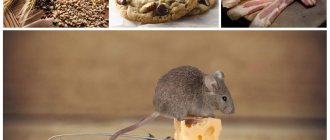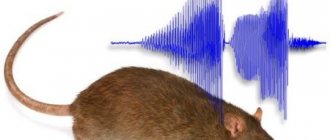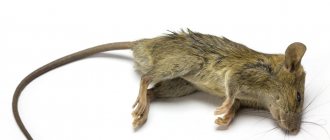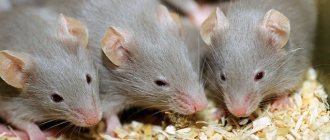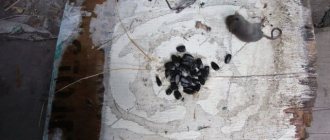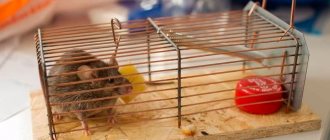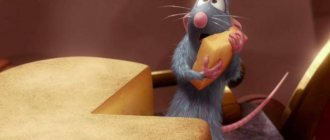sells galvanized mesh to protect against mice and rats. No “rods”, “strings” or joints, just a solid sheet!
OC mesh 6x6 for 149 rubles/sq.m., roll size 1x10m, OC mesh 10x10 for 107 rubles/sq.m., roll size 1x15m.
The warehouse store is located at: Moscow, st. Remizova 14k1 (m. Nagornaya) Delivery and pickup available! We take away unspent surpluses!
Phone Website: https://setkamsk.ru
Where do mice go?
Due to the peculiarities of its construction, a frame house is an attractive place for a rodent to stay. A wooden or, less commonly, metal frame made of racks, support beams, and struts is sheathed on the outside and inside with protective and finishing materials. Slab insulation is laid inside the hollow walls. Floors are often arranged on joists, between which thermal insulation is placed in the form of rolls or slabs.
The technology involves installing ventilation gaps to remove condensate and circulate air in structures. This protects them from rotting and moisture accumulation.
At the same time, all cracks and technological gaps are an accessible route for mice to enter. Favorite habitat is insulation slabs. Rodents make passages in them, make nests, and breed numerous offspring.
Mouse fuss is annoying, but in addition to this, considerable damage is caused to the insulation. The structure loosens and disintegrates over time, which leads to loss of heat-insulating properties.
Research conducted in the USA at the University of Fisheries, Forestry and Wildlife Sciences found that over six months of rodent activity, the thermal conductivity of insulation increases 5 times.
The experiment involved families of house mice. They were planted for 6 months in imitation walls, insulated with common types of insulators for frame, brick and concrete houses - extruded polystyrene foam, basalt or glass wool, vermiculite, cellulose ecowool. Foil vapor barriers and isocyanate did not stop the sharp teeth.
Being near mice is dangerous for electrical wiring. Violation of the insulation from the sharp teeth of rodents can lead to a short circuit and even a fire.
Wooden structures - frame elements, floors, ceilings - are thoroughly damaged by gray animals. These are undesirable phenomena that lead to a gradual loss of strength and disruption of the aesthetic appearance of the finish.
Formidable enemies
House mice are the largest population of mammals. They reach a length of 9.5 cm and a weight of 30 g. Thanks to the property of synanthropy - coexistence with humans - they are perfectly adapted to his lifestyle and housing. They live everywhere except in the Far North and Antarctica.
A little mouse can run 5 km in search of suitable housing. She is especially active at the end of summer and autumn, as she really does not like cold weather. It digs holes in the ground to a depth of 60 cm. It moves along constant routes, leaving paths of dust and droppings, holding them together with urine. Its specific smell indicates the existence of a rodent in the room.
Mice live in families where there are several females per dominant male. The individual range around the nest is 900-1200 m². Rodents try not to leave the area.
House mice run fast, climb, jump, and swim well.
They breed all year round. One female can bring up to 120 cubs per year.
The centuries-old proximity of mice and humans is an indisputable fact. But the fact that 80% of the rodent genome is the same as the human genome still remains a mystery. This feature is used in science to study diseases and methods of treating them. The Methuselah Foundation, which deals with the problem of aging, awarded a prize in 2005 for the five-year longevity record of a laboratory mouse. A monument was erected to her in Novosibirsk Akademgorodok.
The house mouse's closest "companions" are gray and black synanthropic rats. Their lifestyle is similar to that of mice, but the damage caused to the farm is many times greater. Rodents, without any harm to their own health, damage lead and aluminum pipes and live cables, creating emergency situations in transport and communication networks.
A feature of a large rodent is the ability to adapt to poisons and the ability to think abstractly. Thanks to this, the pest population is constantly growing, despite active control - deratization.
Why are rodents dangerous?
Not only building structures, but also food supplies suffer from mice and rats. Having made their way into storage, animals are able to quickly destroy or contaminate cereals, vegetables, and fruits. They do not neglect anything, even soap, candles and glue, although they belong to the rodent species. In nature, the basis of their diet is plant seeds.
Clothes, shoes, books, furniture when they “meet” with mice become unsuitable for further use.
Being around rodents is dangerous for humans. Mice and rats carry severe, even fatal infections - pseudotuberculosis, plague, leptospirosis, tularemia. Infection occurs through contact with feces or the bite of blood-sucking arthropods that live on animals and easily pass to humans.
Recent studies have confirmed that the virus that causes tumors in the mammary glands of mice is contagious to humans and contributes to the development of breast cancer.
Methods for eliminating moles other than mesh
What to do if underground pests have multiplied, but the owners are not ready to spend tens of thousands of rubles - buy an EcoSniper LS-997R mole repeller. This is a device for all-season use, operating on the principle of delivering an ultrasonic signal. Thanks to their acute hearing and sense of smell, shrews perfectly hear the entire spectrum of sounds and, at the slightest discomfort, quickly leave their burrows. EcoSniper LS-997R delivers ultrasound in a range that humans cannot hear, but is perfectly detected by moles, rats, mice and other pests. In terms of power output, the signal is similar to the roar of an airplane turbine. Animals cannot stand such noise and therefore try to go to a quieter place as quickly as possible.
Unlike a mole net, the repeller does not need to be buried around the entire perimeter; it is buried in one point of the garden and turned on. All. The device will perform further work itself. In order to completely expel pests, the device is turned on at a certain period of time. Then once a season a preventive inclusion is made. Mole repeller EcoSniper LS-997R does not kill animals, does not cause them physical harm, and is safe for humans and pets. Depending on the power, the device covers up to 45 meters, so the radiation of the wave will affect not only the beds, but also the cellar, basement, garage - all those places where rodents love to live.
By purchasing EcoSniper LS-997R, the owner receives a guaranteed result without tedious excavation work. And to choose a repeller, call our operators. An experienced manager will help you choose a device that is suitable for individual conditions of use, terrain and other features of the site. And remember, moles do not hibernate in winter, so now is the time to take care of preserving the harvest.
Metal mesh – barrier for rodents
In order to encounter mice and rats on your territory as rarely as possible, you need to make your home inaccessible to penetration from the outside. Protection of frame houses from rodents is carried out comprehensively - from the construction of the foundation to the extermination of pests when they appear.
To prevent mice from entering the house, galvanized metal mesh with a mesh size of up to 6 mm is used. This size is due to the ability of the animal’s skull to flatten to a minimum volume. Plastic protection is not reliable; rodents can easily deal with it.
Expanded metal mesh is ideal for this purpose. Even small rodents will not be able to squeeze through the small hole. They are made from sheet metal 0.45-0.50 mm thick by cutting diamond-shaped cells and then stretching them. The product is called abbreviated as TsPVS - all-metal expanded metal mesh.
The main application is reinforcing putties and plasters, but recently it has been widely used as protection of frame houses from mice and rats. CPVS weighs little and does not spread when deformed. It is durable, not susceptible to corrosion and the effects of sharp rodent teeth.
The mesh is attached directly to the frame with staples using a construction stapler or self-tapping screws with press washers. For installation on thermal insulation, special elongated clamps are used.
The price of the material is affordable - 70-160 rubles/m². The investment pays off with a restful sleep, saved nerves and money.
In addition to TsPVS, woven meshes with a mesh size of up to 6 mm and a wire thickness of 1.2 mm are used. They are more expensive - up to 250 rubles / m², but more powerful metal can stop not only mice, but also rats.
Rodents can go deep into the ground up to 50-60 cm. They enter the house through cracks in the foundation, basement and floors, so the main protection should be located at the level of these structures.
Professionals who have built dozens of frame houses advise how to protect a frame house from rodents using a mesh:
- Secure a vertical underground curtain around the perimeter along the base and foundation to a depth of at least 100 cm;
- Lay it on the subfloor with a layer preceding the insulation so that mice cannot get into it and settle in;
- Trim the outer corners of the building before finishing;
- Close ventilation gaps, chimneys, foundation vents and other technological openings.
Potential entry points for rodents will be covered with a barrier that is impenetrable to rodents. The main requirements for the mesh are cell size - up to 6 mm and sufficient thickness of the zinc layer. A mouse will fit into larger holes without difficulty, and poor quality galvanization will lead to rapid destruction of the base metal.
Features of installing protective fabric
There are several options for laying out anti-mole mesh under the lawn:
- Laying around the perimeter of the entire garden. This will protect the area from pests from the outside. Used for dachas with an area of up to 30 acres. If the site is fenced with a fence on a strip foundation, the mole net is dug in from the unprotected side. A depth of up to 0.8 m will allow all entrances/exits to be blocked.
If there are moles in the ground during the period of work, they are caught. Otherwise there will be no result.
- Horizontal layout. The soil is raised by 100-150 mm, then a protective sheet is laid out and covered with earth again. Be sure to carefully connect the sheets to prevent the mole from moving the mesh and throwing the soil out. The method is suitable only if the lawn is arranged. If the mesh under the lawn is laid on an area for planting bushes or beds, choose a different method.
The disadvantage of horizontal laying out is that rodents can easily dig feeding passages above the canvas. For example, there were mole rats up to 50 mm in size on the site, and the canvas was buried 150 mm. Pests will feel at ease in the soil; protection will not hinder them at all.
- Vertical or island display. Used in limited areas where it is necessary to protect the bed from rodent invasion. The structure is deepened by 150-200 mm, and up to 300 mm of mesh is also brought up. Convenient for high beds, but inconvenient for flower beds.
Before buying mole nets, it is worth considering all the advantages and disadvantages of using canvas.
Reliable methods for rodent control
If mice appear in the house, you can use traditional methods - poisoned baits, tobacco dust, mint, mousetraps, or more modern ones - ultrasonic repellers. But the most effective way is to prevent pest entry by installing protection during the construction phase.
Reinforced concrete slab
A monolithic foundation made of reinforced concrete is a strong foundation for the building and an insurmountable obstacle to the teeth of rodents. Mice and rats will not be able to penetrate a reinforced slab 25-30 cm thick. The remaining paths can be protected with fine mesh.
Expanded clay
A subfloor laid on the ground can be made impenetrable to rats and mice using expanded clay.
Expanded clay is poured onto the prepared base in a layer of 25-45 cm. A layer of lean concrete 3-5 cm thick is laid on top or poured with cement mortar. Then a dense waterproofing film or membrane is spread. The installation of floors is completed with screed, gypsum fiber or particle boards, and finishing.
Expanded clay is inedible for mice.
They do not make passages in it or make nests. They will not be able to settle in the insulation due to its friability.
Insulation
When choosing a heat insulator for a frame house, such a characteristic as damage by rodents is important. There are three categories of insulation materials, to which mice have different attitudes.
They never touch the first ones. This is foam glass in granules and slabs, glass wool, ecowool. Materials based on silicate raw materials injure the mucous membranes of the mouth. A thin layer of glass wool is enough to stop the rodent. Borax and boric acid, which are used to treat cellulose, are toxic to them. Therefore, the walls of frame houses can be insulated with these heat insulators without fear.
The second category is reluctant to be damaged by mice. These are basalt wool, extruded polystyrene foam, liquid expanding polyurethane foam. The materials are inedible to animal pests, but are permeable. They make passages through them and use fibers to make nests.
The third type of insulation is the most beloved and inhabited by rodents. This includes polystyrene foam and expanded polystyrene. In light, warm materials, gray pests create extensive labyrinths and nests in which they hatch numerous young.
To prevent uninvited tenants from settling in a frame house, high-quality, high-density materials are chosen for insulation.
The tougher they are, the less they attract rodents.
Metal bumpers
Used to protect against mice in houses on pile or strip foundations. They are circular ebbs installed around the perimeter of the building at the level of the top of the plinth. Their width is at least 36 cm.
A continuous strip of smooth metal 40-45 cm high will become an obstacle to rodents climbing the walls.
Some builders recommend mounting the base for the subfloor of a frame house on a pile foundation from sheets of steel, for example, corrugated sheets. This is a reliable way to prevent animals from entering your home.
Rodents in a frame house
Mice appear in a frame house, as well as in other types of residential buildings, in search of food. If access to food is provided on a regular basis, mice will not only linger, but will also build a cozy nest away from human eyes, begin to actively reproduce and increase the population.
How to prevent mice from breeding.
Often mice appear in the house with the onset of cold weather - optimal living conditions are created in the room. Over time, pests begin to look for food and actively colonize the entire living area of your frame frame.
Mice appear in a private house due to mistakes made by builders during the construction process. If there are gaps between the joints in the wall and floor area, rodents are likely to choose the frame as their home. Since the design involves a sheathed frame, optimal space is created between the panels for the movement of small rodents.
On a note
Mice often breed in the insulation of a frame house, so it is extremely important to choose the right material that is not suitable for rodent housing.
Remember that there are absolutely no obstacles for hungry mice, especially if they smell cereal, flour, sugar, or bread nearby. Try to store any food not in bags or bags, but close everything in airtight containers.
